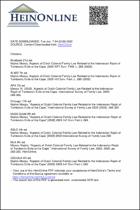| dc.description.abstract | 'As far as family law is concerned, we in South Africa have ... every kind of family ... This is the result of ... history ... Our families are suffused with history, as family law is suffused with history, culture, belief and personality. For researchers it's a paradise ... 't
The above quotation is apt for this chapter for two reasons. First, the chapter highlights the plight of the family of the former Rajah of Tambora, during a period of Dutch colonialism at the Cape, as one such historical example. The Rajah was one of many royal and high-ranking influential Indonesian political exiles (known as 'Orang Cayeng') banished to the Cape for rebelling against the Dutch.
The Cape was under a first period of Dutch rule for roughly 150 years from 1652 until 1795. During this time it was governed by the Dutch East India Company or Vereenigde Oost-Indische Compagnie (VOC).2 The Rajah and his wife arrived at the Cape in 1698. As also confirmed by the visiting Reverend Francois Valentijn in his account of his journey to the Cape, the Rajah, who
had ruled over a small kingdom called Tambora on the Indonesian island of Sumbawa, was 'banished to the Cape because of his bad behaviour on Bima, and she [his wife] followed for love of him'3 The states of Tambora and Bima were VOC trade posts located on the same island (Sumbawa). 4 The Rajah spent a total of some 17 years at the Cape, over, uniquely, two distinct periods in exile there (from 1698 to 1710 and 1714 to 1719).5 At the time of their arrival the couple were childless but by 1719 they were blessed with five children, four sons and a daughter. It is clear from the names of the Rajah and his wife, Abulbasi Sultan and Zytie Sara Marouff (or Care Sale), and the birthnames of their children (Ibraim Adaham, Mochamat Aseek, Mochamat Daijan, Mochamat Asim and
Sitina Asia) that all were Muslims. | en_US |

